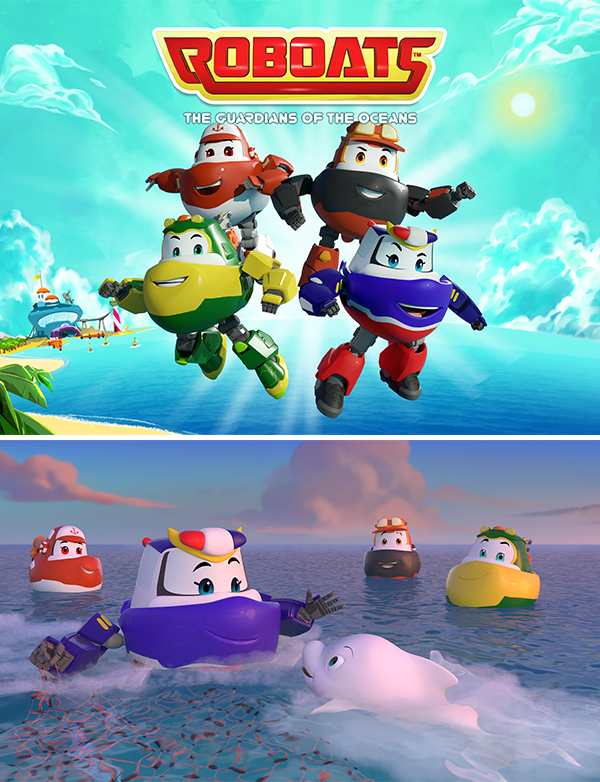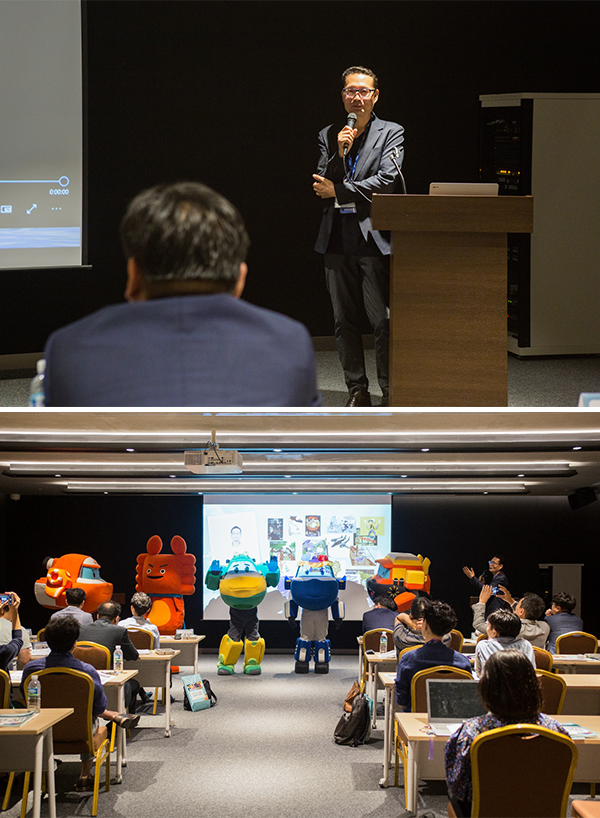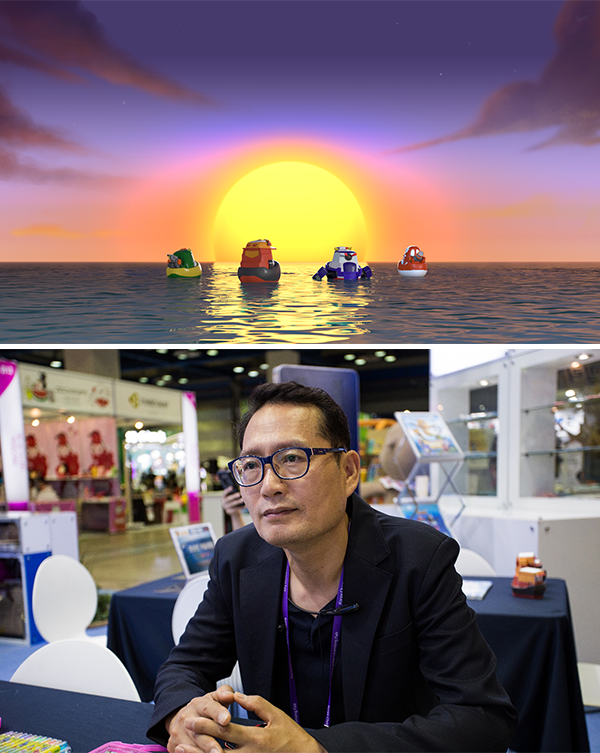K-Content News
- October 05, 2018
How Could Korean Ship-Robot Character Reached French Ocean?

Part 1. Global Market Penetration of Korean Characters: Who’s the Next Champion?
The character industry has been a key part of the Korean contents industry for many years. Last year, Korea’s character market celebrated its 50th anniversary and surpassed 10 trillion won (approximately 9 billion dollars) in size. As time goes on, more and more Korean characters are hitting the global market. After Pororo from the animated Pororo the Little Penguin experienced huge success in the global market, ‘successors’ such as Tayo and Line Friends have continued the Pororo legacy. The Korean character industry has recently witnessed a series of international successes, but for many reasons, it is still hard for most businesses to develop a new character that is marketable on a global scale. The reason for this is that the demands, preferences, and behaviors of foreign consumers are different from those of domestic consumers. As such, knowledge of each region’s unique culture is essential for developing a character that is able to meet each market’s needs. Given these considerations, the international success of Roboats, a character company established in 2015, is particularly notable. With the support of the Yeongdeok-gun and Gyeongsangbukdo Creative Contents Agency (GCCA), Roboats was selected among local contents companies as a recipient of financial aid, under a program run by the Korea Creative Contents Agency (KOCCA). Using an investment from the KOCCA totaling 450 million won (400 thousand dollars), the company made the first-ever, ship-robot characters in Korea, known as ‘Roboats’. One remarkable thing about Roboats is that a French animation company showed a lot of interest in the characters even before they were properly promoted in Korea. In May 2017, only 6 months after Roboats were created, TF1, the biggest private broadcaster in France, sent a letter of intention to Roboats. Two months later, a famous French animation corporation called BEE Production signed a joint production contract with Roboats and agreed to invest 7.5 million Euros (8.7 million dollars) in the production of a 52-episode long international animation series. In addition, in February 2018, a French, state-run broadcasting station, France.TV suggested and started a co-development project with Roboats.

Part 2. How to Make a Globally Desirable Character: Roboat CEO, Lee Seung Wook
The expansion of Roboats overseas can be largely attributed to the Roboats CEO, Lee Seung Wook, who was involved in the French animation industry for more than 20 years. In the early 90’s, Mr. Lee wanted to study 3D animation professionally, but there were no such opportunities in Korea. So, he went to France to pursue his dreams and started studying at a prestigious French university. After graduation, however, he didn’t come back to Korea but rather dove into the French animation industry, producing 22 animations over the next 24 years.
Upon his eventual return to Korea, Mr. Lee’s experience in the French animation industry helped him create a character that appealed to European consumers. According to Mr. Lee, consumer response to Roboats is much more favorable in foreign countries like France than in Korea. In the eyes of French corporations, Roboats is an intellectual property (IP) with great potential. This is true for several reasons. First, Roboats are well suited to the current educational trends in France. “France is more interested in environment protection than Korea. ‘Ship robots’ provide a great avenue to discuss the importance of the marine environment. This is the reason why the French market gave such positive reviews of Roboats,” said Mr. Lee.
Furthermore, the Roboats franchise is also expected to easily expand into the foreign toy market. In many European countries, the first toy a child ever receives is a bath toy. This is another advantage for a ‘ship-robot’ character. “Actually, the American toy corporation Hasbro has also recently contacted us,” Mr. Lee added.

Part 3. Roboats CEO Interview: The Meaning of a Ship-like Character and How to Sell It
First, please tell us the reason why you made a character that is so strongly connected to the ocean.Historically, Korea exercised strong influence over East Asia whenever the power of its sea and land were united. However, starting in the Joseon Dynasty, the importance of the ocean began to be ignored and is largely ignored even today. Yet, despite all this, there continues to be a lack of stories about the ocean. This is the reason why I created Roboats—so that children can recognize the potential and hidden possibilities of the ocean.
Then why ships?Children are highly interested in vehicles like ships, airplanes, and cars. There are a few reasons why I chose ships instead of some of these other vehicles. One reason is that ships have the greatest potential for franchise expansion in various markets. When you think about the car-based characters in Korea, for instance, they tend to be designed after real-life Korean car models. This becomes a roadblock when you try to sell those characters to foreign markets. However, in the case of ships, there is no commonly remembered brand, so the character design is independent from existing ship models.
Are there any other advantages of ship characters?Diversity is another draw. Airplanes, for example, have a relatively short history and there are not many types. Ships, on the other hand, have the longest history and their design varies according to the natural environment of each region. Four Roboats, which were designed after a police boat, fire boat, tugboat, and lifeboat, travel around the world saving these various types of ships and marine lives.
Please tell us more about your coproduction systemIn many Korean-Foreign coproduction projects, the foreign entity takes responsibility for the storyline and the Korean company handles the rest of the production process, since Korean companies has long-since been considered weak in storytelling. We have also adopted this same model because we aim to make storylines that can be enjoyed worldwide. However, from the first stage of production to the last, we will participate and be intimately involved in deciding every detail as a leading part of the project. What we are trying to do is to make Roboats animations a combination of Korean characters and global stories. It is easier to understand if you compare it to internationally popular Japanese animations. Although they are popular worldwide, these animations always reflect the sentiments and thoughts of the Japanese people and their culture. In this same way, we at Roboats will represent Korea in our work.
What is your licensing plan and market objectives?For many Korean provinces, it is very important to promote regional food resources. Roboats has already collaborated with local food companies and marketed a couple of food products for kids. We plan to make bath toys next year, and are considering video game development in the future as well. Also, we have already produced educational augmented reality (AR) contents for kids. Roboats have the potential to expand into the global market. It might have been an unattainable dream if we were alone, but since we have joined hands with major French corporations, it’s a dream that can soon be realized. In addition to the original character content, spin-off products for international consumers will soon be developed and released quickly with the help of international partners such as Hasbro.
